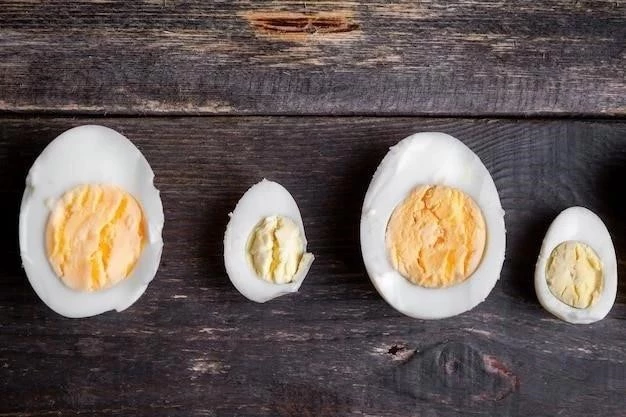
Scrambled eggs are a breakfast staple, a quick and easy meal that can be enjoyed in countless ways․ But achieving the perfect scrambled eggs ー silky, smooth, and creamy ー can be a culinary challenge․ Many of us have experienced the disappointment of dry, rubbery eggs that lack the desired texture․ Fear not, for there’s a simple trick that can revolutionize your scrambled egg game, transforming your breakfast into a culinary masterpiece․
The Secret to Silky Scrambled Eggs
The key to achieving those coveted silky scrambled eggs lies in incorporating a touch of water into the cooking process․ This seemingly simple addition makes a world of difference in the final texture․ Water acts as a steam generator, gently cooking the eggs from within, resulting in a tender, moist, and luxuriously smooth outcome․
The Science Behind the Trick
To understand why water works its magic, we need to delve into the science of egg proteins․ Eggs are primarily composed of proteins called albumin and globulin․ When heated, these proteins denature and solidify, forming the structure of the cooked egg․ However, if the heat is applied too quickly or unevenly, the proteins can become tough and rubbery․
Water, when introduced during cooking, slows down the heating process․ This gentle heat allows the proteins to denature more evenly, resulting in a finer, more delicate texture․ The steam generated by the water also moisturizes the eggs, preventing them from drying out and becoming tough․
Mastering the Technique
Now that we understand the science, let’s explore the practical application of this game-changing technique․ Here’s a step-by-step guide to achieving silky scrambled eggs⁚
- Gather your ingredients⁚ You’ll need eggs, a small amount of water, salt, and pepper to taste․
- Crack the eggs and whisk⁚ Crack the desired number of eggs into a bowl․ Whisk them thoroughly until the yolks and whites are well combined․ The key is to create a smooth, consistent mixture․
- Add water⁚ For every two eggs, add one tablespoon of cold water․ This ratio ensures the perfect balance of moisture and protein․ Gently whisk the water into the egg mixture․
- Heat the pan⁚ Place a non-stick pan over medium heat․ A well-seasoned cast iron pan is ideal, but any non-stick pan will do․
- Add a touch of fat⁚ Add a small amount of butter, oil, or a combination of both to the pan․ The fat prevents the eggs from sticking and adds a rich flavor․
- Cook slowly⁚ Pour the egg mixture into the hot pan․ Using a spatula, gently stir the eggs continuously․ The goal is to cook them slowly and evenly, allowing the steam to work its magic․
- Season and serve⁚ As the eggs begin to set, season them with salt and pepper to taste․ Continue stirring until the eggs reach your desired consistency․ They should be soft, creamy, and slightly wet․
Tips for Perfect Scrambled Eggs
Here are some additional tips to ensure your scrambled eggs are a culinary triumph⁚
- Use fresh eggs⁚ Fresh eggs have a higher water content, resulting in a more tender and moist texture․
- Avoid overcooking⁚ The key is to cook the eggs until they are just set․ Overcooked eggs will be dry and rubbery․
- Don’t stir too vigorously⁚ Gentle stirring allows the eggs to cook evenly and prevents them from becoming tough․
- Experiment with flavors⁚ Add herbs, spices, cheese, or vegetables to your scrambled eggs for a flavor boost․
- Serve immediately⁚ Scrambled eggs are best served immediately after cooking․ The texture deteriorates as they cool․
Conclusion
The humble scrambled egg can be elevated to new heights with a simple trick⁚ incorporating a touch of water into the cooking process․ This technique, combined with the tips outlined above, will ensure that your scrambled eggs are consistently silky, smooth, and creamy, making them a delicious and satisfying breakfast treat․
So, next time you’re craving a breakfast masterpiece, try this simple trick and experience the magic of silky scrambled eggs․ Your taste buds will thank you!

Artykuł stanowi cenne źródło wiedzy dla osób pragnących doskonalić swoje umiejętności kulinarne. Autor w sposób przystępny i zrozumiały przedstawia kluczowe aspekty związane z przygotowaniem jajecznicy. Dodatkowym atutem jest zastosowanie języka potocznego, co czyni tekst bardziej przyjaznym dla czytelnika.
Prezentacja krok po kroku techniki przygotowania jajecznicy z dodatkiem wody jest bardzo przydatna. Autor w sposób przejrzysty i logiczny przedstawia poszczególne etapy, co ułatwia odtworzenie przepisu w praktyce. Dodatkowym atutem jest uwzględnienie informacji o niezbędnych składnikach i ich ilości.
Artykuł stanowi wartościowe wprowadzenie do tematu doskonalenia techniki przygotowywania jajecznicy. Autor w sposób jasny i zrozumiały wyjaśnia kluczową rolę wody w osiągnięciu pożądanej konsystencji. Szczególnie cenne jest przedstawienie naukowych podstaw tego zjawiska, co pozwala na głębsze zrozumienie procesu gotowania.
Autor artykułu w sposób fachowy i rzetelny omawia zagadnienie wpływu wody na konsystencję jajecznicy. Szczegółowe wyjaśnienie procesów zachodzących podczas gotowania jajek wzbogaca tekst i czyni go bardziej wartościowym.
Artykuł jest dobrze napisany i zawiera wiele przydatnych informacji. Autor w sposób zrozumiały i logiczny przedstawia kluczowe aspekty związane z przygotowaniem jajecznicy. Dodatkowym atutem jest zastosowanie języka potocznego, co czyni tekst bardziej przystępnym dla czytelnika.
Autor artykułu w sposób jasny i zwięzły przedstawia kluczowe aspekty związane z przygotowaniem jajecznicy. Szczególnie cenne jest przedstawienie naukowych podstaw tego zjawiska, co pozwala na głębsze zrozumienie procesu gotowania.
Artykuł wyróżnia się prostotą i klarownością przekazu. Autor w sposób przystępny i zwięzły przedstawia kluczowe aspekty związane z przygotowaniem jajecznicy. Dodatkowo, zastosowanie języka potocznego czyni tekst bardziej przyjaznym dla czytelnika.
Artykuł wyróżnia się prostotą i klarownością przekazu. Autor w sposób zwięzły i logiczny przedstawia kluczowe aspekty związane z przygotowaniem jajecznicy. Dodatkowo, zastosowanie języka potocznego czyni tekst bardziej przystępnym dla czytelnika.